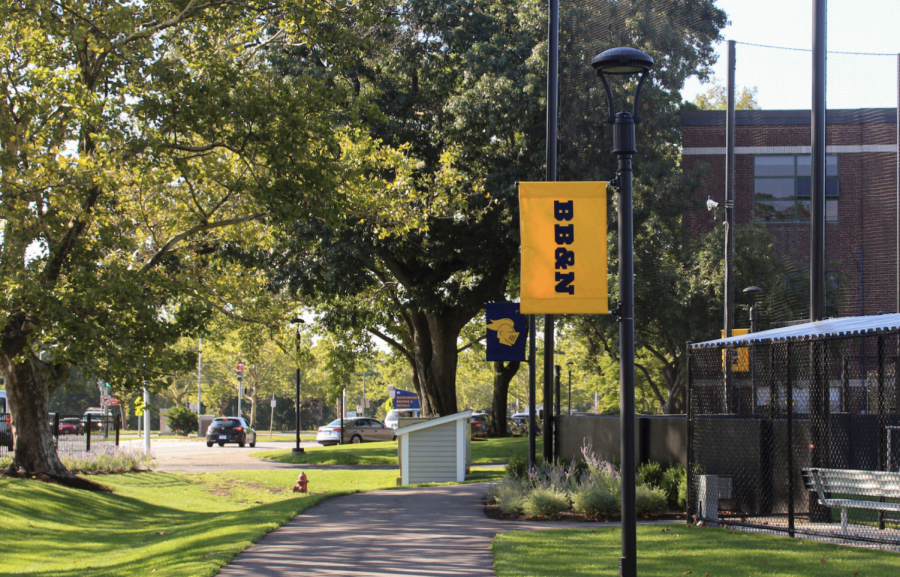New schedule restructures US daily rhythm
Changes include morning CABs, shortened advisories, and one less assembly
September 8, 2022
Arriving to school at 8:40 a.m. on Tuesdays and still making it to class five minutes early feels unfamiliar to most students. Now with a new schedule bringing changes like a shared Community Activity Block (CAB) every Tuesday morning, it’s possible.
With the new school year comes new classes, new activities, and—after a lot of feedback from students and faculty—a new schedule. Created by the scheduling committee over the course of several months last year, the new weekly schedule features changes like class meetings on Mondays instead of Wednesdays, only one assembly per week instead of two, and two shorter advisories. With a CAB every Tuesday morning, students can choose whether to get a little extra sleep or use their CAB time for meetings.
The committee was comprised of 11 faculty members and seven students with Upper School (US) Dean of Teaching and Learning and Science teacher Michael Chapman as the chair.
“I really wanted this effort to be a true partnership [between faculty and students],” Mr. Chapman said. “Having representation from all different departments and all different grade levels was key, where voices can be heard and working towards goals.”
Mr. Chapman sent out an email in October of 2021 to all students and faculty inviting them to be members of the committee. Mr. Chapman said he was looking for about eight to 10 students from various grades to volunteer their time and opinions. This includes students from the general student body as well as those on other committees and teams.
The committee met several times throughout the year to create a new schedule that exemplified the values of wellness, community, and consistency, Mr. Chapman said. The committee plans on meeting during the 2022-23 school year to assess the efficacy of this schedule.
“As more values continue to emerge, that’s when our schedule will continue to evolve,” he said. “We will continue our understanding and research into what makes an effective schedule as we continue to move towards finding a schedule that meets as many needs of our community as possible.”
The first step in the schedule-creation process was a data- collection survey sent to faculty and students in December. Mr. Chapman said the survey was intended to discern what required the most attention in planning for the coming year and ended up having many responses from both faculty and students.
Findings included 69.1% of the community identifying assembly blocks as having the most negative impact on their schedules, and most students preferring the cadence of three 45-minute blocks and one 65-minute block per class every week.
After looking at the survey data, the committee created further questions for a different medium: in-person focus groups. The groups also presented sample schedules from peer schools including Milton and Moses Brown for comparison.
“We looked at the pros and cons of each schedule, as well as how they aligned with our values. We were able to combine elements of each schedule to get the new version that we are now putting into implementation,” Mr. Chapman said.
Leo Wang ’24 said he appreciated the inclusion of students in the process this year given that the schedule for the 2021-2022 school year was made by faculty over the summer without student input.
“Having the scheduling committee was a really nice way for students to voice their opinions,” Leo said. “As a student council representative, I wasn’t just voicing my own opinions, I was also representing my class.”
Leo also mentioned that he’s most excited for the delayed starts on Tuesdays.
“It provides flexibility,” he said. “Students could wake up late, go to school to get some work done before class, or attend clubs.”
US Math and Computer Science teacher and scheduling committee member Mark Fidler said a schedule has a lot of influence on a student’s day.
“As a teacher, adviser, and faculty member, I can see that the schedule can determine a rhythm to a day,” Mr. Fidler said. “Ultimately, a schedule can contribute to making psychological happiness. It can also make the day go by more pleasurably or make you more productive.”
This isn’t the first time the school has changed its schedule. Mr. Fidler said the most drastic change was the addition of x-blocks, or common free blocks, which occurred about 15 years ago. The evolution of the schedule isn’t over yet, though. Mr. Fidler said this is the beginning of much re-evaluation of the schedule in the following years.
“I’m glad the conversation is still going,” he said. “We’re keeping an open mind because maybe a variation of our current schedule will be best, or maybe a whole new schedule will work out better.”
A student on the committee, Alisa Ishii ’23 said, “this is only phase one” and there’s more to come. She said she enjoyed the process of working on the committee and generating possible schedules.
“I ended up having two or three possible schedules,” she said. “I really got into it, asking questions like ‘what if we changed this block’s length?’ I love puzzles, and I saw this like [a puzzle].”
The class of 2023 is the only class left at the school that will have experienced four different schedules in their time at the Upper School.
Andri Kadaifciu and Nina Khera (both ’23) are eager to see how the schedule works for them.
“I am really excited for a different structure to the year,” Andri said. “The late morning start will provide me with a secure time to get some things done or catch up with friends.”
“This schedule definitely prioritizes wellness a lot more,” Nina said. “It’s the little things, like the long passing times, that make a difference.”

